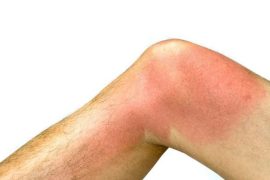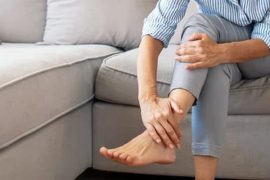Зміст
Knee pain is most often caused by a fall or push as a result of physical activity. Most often, professional athletes complain about problems with this part of the body: athletes, soccer players, volleyball players, etc. Those who engage in amateur jogging or in the gym are not free from them. Knee pain also often accompanies older people and overweight people. We often underestimate and use affordable painkillers to reduce pain. However, it turns out that a sore knee may be the first symptom of many diseases. When should we worry and see a specialist? Let’s find out.
Causes of Knee Pain
Sporadic knee pain should not bother anyone. Especially if we provide ourselves with the right dose of movement. This can be caused by overload, for example, if we were in the bus for a longer time or ran or traveled a greater distance than usual. Knee pain can also be the result of being overweight. Extra pounds make the muscles and joints around this part of the body more stressed. If the cause of the pain is known, the usual methods of eliminating it should bring relief. However, if this does not happen and other, additional ailments appear, you need to contact a specialist.
What can signal a sore knee?
A sore knee can be caused by various conditions. If we read this signal correctly, it is highly likely that the diagnosis will be made quickly and the treatment will be less invasive. This can happen with Lyme disease – a disease that affects many systems of the human body. Without treatment, this can lead to many complications, including neurological, osteoarticular, and cardiac problems. Pain in the knee can indicate that the body is infected with a dangerous bacterium spread by ticks. It is worthwhile to carefully look at the whole body, because the disease can be accompanied by so-called migratory erythema or oval redness of the skin with a light ring. In this case, you should consult a doctor.
Watch your sore knee closely
For severe knee pain, home methods are often used that consist of ointment or painkillers. However, if the specifics do not help, the reason may be more serious. All you have to do is closely monitor your foot and check for other troubling symptoms. You should pay attention to redness at the site of pain and swelling. Sometimes such changes can be accompanied by fever, chills and general weakness of the body. This can be a signal of serious knee inflammation. This occurs, for example, as a result of trauma or improper use of medications intended for the regeneration of joints. In this case, home methods will not help, and only a visit to a specialist can alleviate suffering. The specialist will select the appropriate treatment method, which is primarily based on taking antibiotics.
Arthritis
It is assumed that rheumatic diseases are manifested by initial pain and the so-called breaking of joints located in the hands and hands. Sometimes they are accompanied by a slight swelling, redness or bruising, or an increase in sensation of warmth. It turns out that rheumatoid arthritis or spondylitis can initially manifest as an inflamed knee. In addition to pain, the development of the disease can be determined by the morning strengthening of the limbs, which lasts about an hour. The presence of flu symptoms should also be alarming: lack of appetite, depressed mood and low-grade fever.
Degenerative condition
With age, the effectiveness of the body decreases. This may be the result of degenerative changes that manifest as pain. If the knees are subjected to various activities, such as physical work, playing sports, they become less fit over time. Overweight, which older people often face, contributes to degenerative conditions. Knee pain may also be due to changes in the hips or spine. Of course, this does not always have to include giving up exercise or daily functions in order for the pain to go away. Sometimes it’s enough to slow down and wait for the regeneration of the diseased joint. If this does not help, you need to consult an orthopedist.








